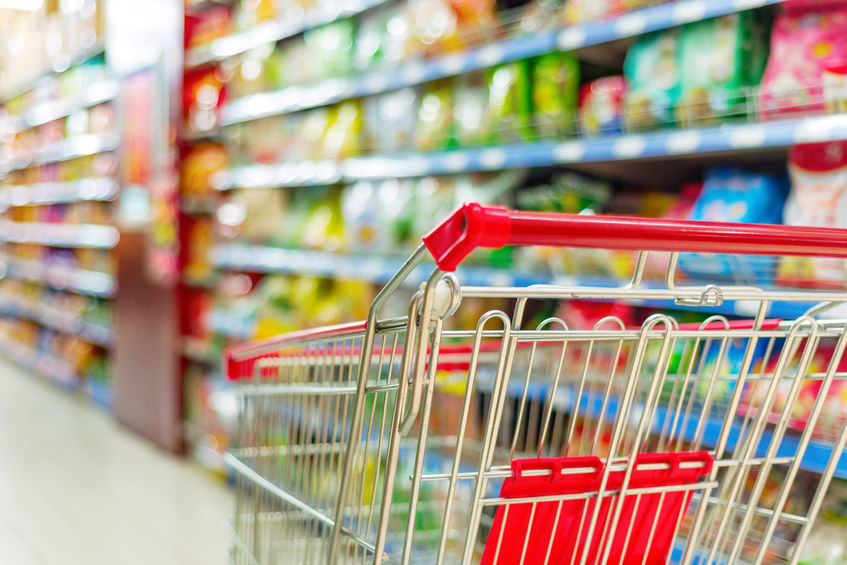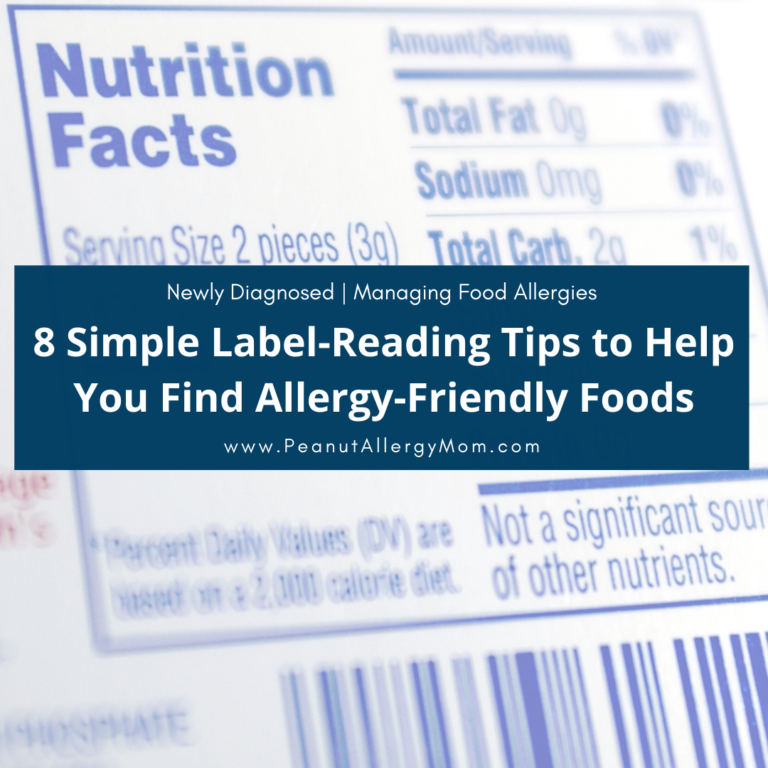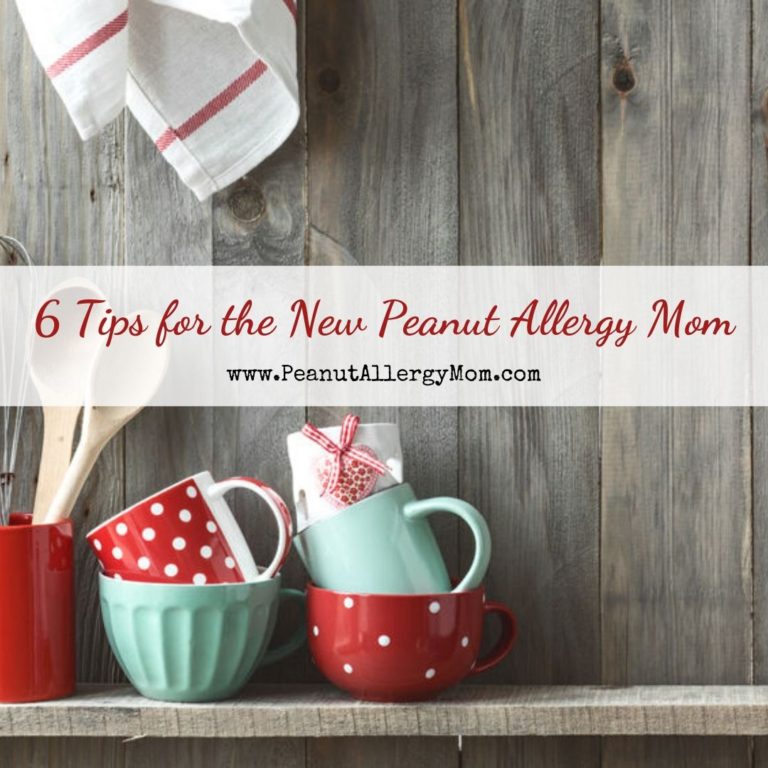How to Check Food Labels for Nuts
Whether you’re newly diagnosed or a peanut allergy veteran, checking food labels for nuts is exhausting and confusing. Successfully managing life with peanut allergies means reading the tiny print on the white food labels displayed on all products. Every time you grocery shop.

This quick how-to guide on how to check food labels for nut products will help you determine if a packaged food item is safe for someone with peanut allergies.
Allergies and Food Labels
Knowing what allergens to avoid and how to recognize the ingredients you can’t have are essential to eating safely. And it doesn’t matter that you’ve bought the same strawberry frosted pop-tarts for four years. You have to read the label every single time. You never know when a food manufacturer might change up their equipment lines, process or ingredients.
But let’s be real here, that big white label with its carbohydrates, fats, and proteins can be overwhelming to understand. Then there’s the size 5 bold font at the bottom with complicated words like maltodextrin, monosodium glutamate and sulphur dioxide.
What does all this even mean? And what does that have to do with peanut allergies? ??♀️
Thanks to the Food Allergen Labeling and Consumer Protection Act of 2004 (FALCPA), federal mandates make it less confusing to figure it all out on your own.
Federal law requires manufacturers to label foods marketed in the U.S. with simple-to-understand terms when they include a “major food allergen.”
While the FALCPA makes it easier to identify ingredients to avoid, it only covers the eight common allergens. These are milk, egg, fish (bass, flounder or cod), shellfish, tree nuts (almonds, pecans, walnuts), wheat, peanuts and soy.
What Type of Information is Provided on Food Labels
The FALCPA allows food manufacturers a choice in how they identify specific allergens on food labels.
Food allergens are identified and declared in one of three ways:
- In the ingredient list, using the allergen’s common name.
- In parentheses following the name of the ingredient, when it is a less common form of the allergen – for example: “albumin (egg).”
- Immediately following or next to the list of ingredients in a “contains” statement – for example: “contains milk, wheat.”
When an allergen is listed on food labels, it means the ingredient is included in that product – no matter how small or minuscule it is.

Food Labels and Allergen Advisory Warnings
It’s important to understand food labels must list “peanut” on the packaging if it includes peanuts. However, federal labeling laws don’t require food manufacturers to include “may contain peanut” or “made in a facility with peanut.”
FALCPA’s labeling requirements also don’t apply to food that include allergens resulting from cross-contamination during manufacturing because of shared equipment.
Any time you read food labels and find yourself confused or unsure about whether it’s safe to consume or not – it’s best to skip it.
Is Peanut Oil Safe?
All packaged foods regulated by the Food and Drug Administration (FDA) must include labels that identify the source names of all major allergens used to make that item.
However, one example that is not required is listing highly refined peanut oil on food packaging. It is often times not listed as a major allergen on a food label.
Studies show highly refined oils are safe for people with food allergies to consume because they contain extremely small levels of allergenic protein. But if you’re like us, you prefer to skip foods prepared with peanut oil.
Discuss with your doctor if you can eat foods that include highly refined peanut oil or if you should skip products with this listed on the food labels.
More Tips for Reading Food Labels
⭐️Foods can include phrases such as “peanut-free” and “egg-free,” but still be manufactured in a facility where the allergens are present.
⭐️A child with peanut allergies can start reading labels at any early age. It’s great practice to review food labels at home and when you’re shopping. As you become more comfortable with food allergies and reading labels, so does your child.
⭐️If the food label is missing or confusing, or if the ingredient list is unclear, do not buy or consume it.
⭐️Learn all you can about your allergen and the less-common names associated with your food allergy.
⭐️Be extra careful with baking products, cosmetics and personal care items. Products exempt from plain English labeling rules also include prescriptions and pet food.
⭐️ Be aware of cross-contamination concerns. If you buy a product that you’re unsure of, call the manufacturer and ask about their practices.
⭐️ When dining out, share your allergen information with your waitress so they can ensure your meal is prepared safely.
When in Doubt, Leave it Out
Manufacturers can change their food labels, equipment and policies any time without warning. It’s always a good idea to check the ingredients every time you buy the product, no matter how many times you’ve consumed it up to this point.
Making it a habit to carefully read food labels every time you shop ensures you avoid any potential problems.
It’s also a great opportunity to demonstrate to your kids how to be diligent about managing their food allergies.
I’d love to hear some tips on how to teach kids about reading food labels and how your family handles ‘may contain’ or ‘made on equipment… ‘ statements. Comment below or on my Facebook page.



